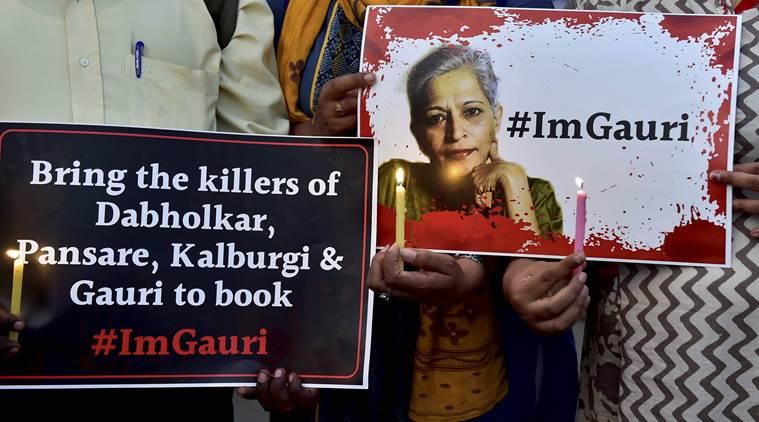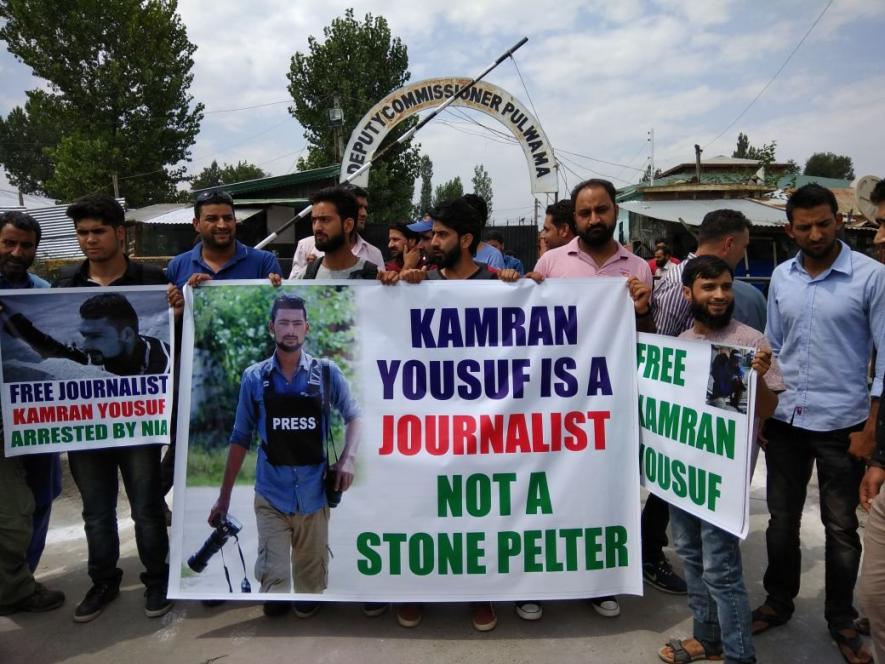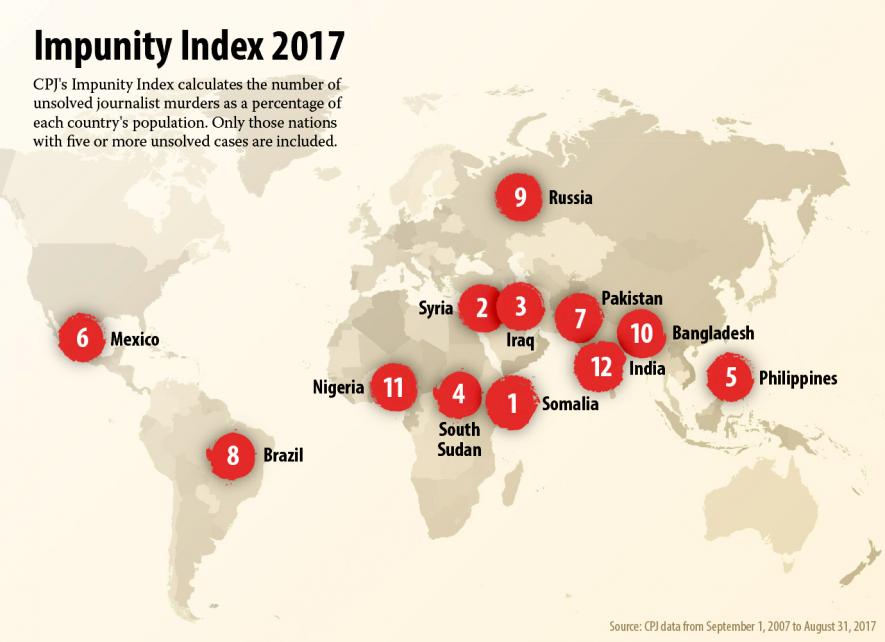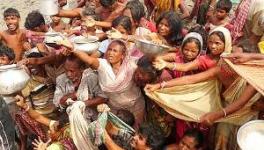In the Firing Line: Alarming Incidents of Attacks Against Journalists in India

Image Courtesy: Indian Express
The ever-increasing peril for journalists dot the landscape of press freedom in India- female journalists groped and assaulted by police in India’s capital, three journalists mowed down and killed, senior journalist shot and killed in front of her home allegedly by Hindu extremists, young journalist killed while covering protests, photojournalist branded as a ‘stone-pelter’ and arrested by the state agency in the Indian side of Kashmir, journalists living in the constant fear of being branded as ‘Maoists’ and jailed in India’s epicentre of Naxal conflict.
India’s position in the World Press Freedom Index has gone down three points among 180 countries, from 133 in 2016 to 136 in 2017. Reporters Without Borders noted that “with Hindu nationalists trying to purge all manifestations of “anti-national” thought from the national debate, self-censorship is growing in the mainstream media.”
Furthermore, Indian journalists are increasingly finding themselves in the line of fire for their reporting. The years 2016 and 2017 witnessed a surge in attacks against journalists which made India the eighth most dangerous country for the press.
This week, three Indian journalists -Sandeep Sharma, Navin Nischal and Vijay Singh are claimed to have been deliberately targeted and killed. All three were mowed down and killed. According to sources, while one was exposing the police corruption, two others were targeted because of their clash with a local politician. Sharma, from Madhya Pradesh, had recently exposed a senior police official who was allowing sand mining in a protected crocodile sanctuary in exchange for a bribe of Rs 25,000 each month.
“After that, he was getting lots of threats from people,” said Rizwan Ahmad Siddiqui, editor-in-chief of News World, the local television news channel for which Sharma worked.
“He was denied police protection and the police asked for the camera he had used to conduct the sting,” he said. “They took the original recording and never gave it back.”
Expressing concerns about the killings, the United Nations (UN) chief Antonio Guterres deputy spokesman Farhan Haq told reporters “We, of course, are concerned about anything that would suggest the harassment or violence against journalists, anywhere in the world and… and would do so in this case.”
The attack happened a few days after female journalists covering students’ and teachers protest march in New Delhi were groped and assaulted by police. On March 23, students and teachers from Jawaharlal Nehru University had organized a massive protest march calling for an end to the increasing state of repression against universities and education system, ending the privatization of higher education, strengthening the reservation system in education, and strict action in cases of sexual harassment. On the way to India’s parliament, the march was met with police violence, in which journalists were also targeted.
In September 2017, a senior journalist Gauri Lankesh, who was known for radical writing against the rising Hindu right-wing violence in the country was shot dead outside her home. The attack, done allegedly by Hindu extremists, caused tremendous outrage across the country. The protesters demanded an end to impunity and alleged state protection for the Hindu extremists. It is interesting to note that India had been witnessing a surge in the violence perpetrated by Hindu right-wing groups across the country since the Prime Minister Narendra Modi led conservative Bharatiya Janata Party government came to power in 2014.
Before Gauri’s murder, three rationalists and activists- MM Kalburgi, Narendra Dabholkar and Govind Pansare- were assassinated allegedly by Hindu extremists.
Journalists in India are also witnessing increased online violence. According to Reporters Without Borders, “journalists are increasingly becoming the targets of online smear campaigns by the most radical nationalists, who vilify them and even threaten physical reprisals”. In 2017, an analysis by Hindustan Times newspaper looked into a week’s worth of tweets sent to four prominent Indian women journalists. According to that, journalist Rana Ayyub received 2,582 abusive tweets and Barkha Dutt received 3,020 abusive tweets. Most often these tweets are accompanied by sexist and Islamophobic remarks.

Apart from the rise in right-wing violence against journalists, direct state repression is also on the rise. In September last year, Karman Yousuf, a 23-year-old freelance photojournalist was branded as a ‘stone-pelter’ and arrested by National Investigation Agency (NIA) from the Indian side of Kashmir. It was claimed that he was targeted for his photo reportage of police repression on protests in Kashmir. After being in jail for months, a Delhi-based court ordered for his release, refuting NIA’s claim that Yousuf was involved in “stone-pelting” and “subversive activities.”
In India’s hotbed of the armed communist uprising -- the Maoist movement, local journalists live in a constant fear of being targeted as ‘Maoist sympathisers’ and jailed. In 2015, four local journalists -- Somaru Nag, Santosh Yadav, Prabhat Singh and Dipak Jaiswal -- were arrested on anti-national activities charges, while a visiting BBC newsman was forced to leave the district. Malini Subramaniam, a contributor to an online news portal, was intimidated and compelled to leave Bastar for reporting about human rights violations by the security forces.

In 2016, a special report "Dangerous Pursuit" issued by Committee for Protection of Journalists, notes that the small-town journalists in India face greater risk in their reporting than those from larger outlets. And the culture of impunity makes the country's press vulnerable to threats and attacks.
Get the latest reports & analysis with people's perspective on Protests, movements & deep analytical videos, discussions of the current affairs in your Telegram app. Subscribe to NewsClick's Telegram channel & get Real-Time updates on stories, as they get published on our website.























